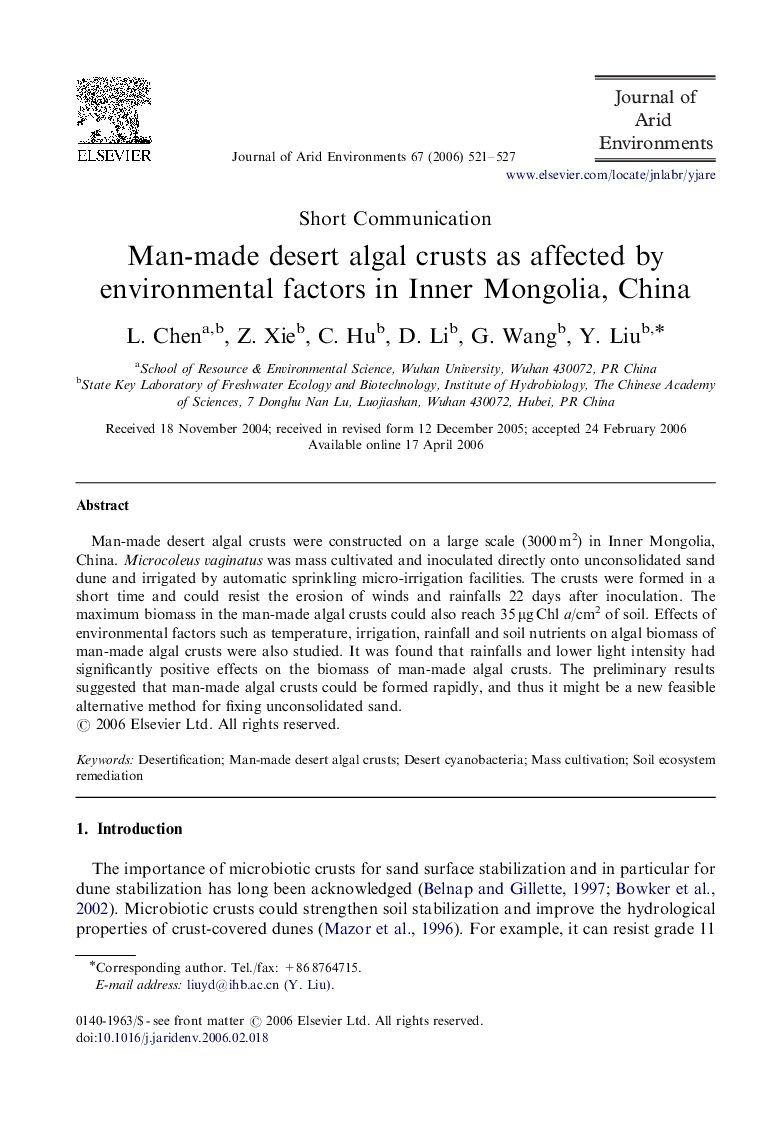| Article ID | Journal | Published Year | Pages | File Type |
|---|---|---|---|---|
| 4394582 | Journal of Arid Environments | 2006 | 7 Pages |
Man-made desert algal crusts were constructed on a large scale (3000 m2) in Inner Mongolia, China. Microcoleus vaginatus was mass cultivated and inoculated directly onto unconsolidated sand dune and irrigated by automatic sprinkling micro-irrigation facilities. The crusts were formed in a short time and could resist the erosion of winds and rainfalls 22 days after inoculation. The maximum biomass in the man-made algal crusts could also reach 35 μg Chl a/cm2 of soil. Effects of environmental factors such as temperature, irrigation, rainfall and soil nutrients on algal biomass of man-made algal crusts were also studied. It was found that rainfalls and lower light intensity had significantly positive effects on the biomass of man-made algal crusts. The preliminary results suggested that man-made algal crusts could be formed rapidly, and thus it might be a new feasible alternative method for fixing unconsolidated sand.
